![]()
![]()
![]()
Use LEFT and RIGHT arrow keys to navigate between flashcards;
Use UP and DOWN arrow keys to flip the card;
H to show hint;
A reads text to speech;
56 Cards in this Set
- Front
- Back
|
What are the 7 Environmental Principles |
Nature knows best, all forms of life are important, everything is connected to everything else, everything changes, everything must go somewhere, ours is a finite earth, nature is beautiful and we are stewards of god's creation |
|
|
It is a branch of science which is interdisciplinary. |
Environmental Science |
|
|
Balance between development and preservation |
Conservation |
|
|
3 primary theories in philosophical approaches to environmental ethics |
Anthropocentric, biocentrism, ecocentrism |
|
|
a living thing that has an organizedstructure, can react to stimuli, reproduce, grow, adapt, and maintain homeostasis. |
Organism |
|
|
group of interbreeding individulsof the same species, which is isolated from other groups. |
Population |
|
|
group or populations of two or more different species occupying the same are at the same time. |
Community |
|
|
community or group of living organisms that live in and interact with each other in specific environment. |
Ecosystem |
|
|
made up of the parts of earth where life exists. |
Biosphere |
|
|
it is also defined as a group of land of ecosystems with similar climates and organisms. |
Biomes |
|
|
• It is an area of tall, mostly evergreen trees and a high amount of rainfall. Earth's oldest living ecosystem |
RAINFOREST |
|
|
Types of Rainforest that found in places with moderate temperature like the northwest coast old USA. This type of forest has huge trees. |
Temperate rainforest |
|
|
Types of Rainforest that found near equator and have lots of precipitation. The plants were diverse, and the climate is warm and humid all year along. |
TROPICAL RAINFOREST |
|
|
This biome has no vegetation. |
Desert |
|
|
Biome that is populated by grasses and nonwoody plants. |
Grassland |
|
|
Other term for grassland is ______ . |
PRAIRIE |
|
|
It is a grassland that consists of grasses and some small trees that are scattered. |
SAVANNA |
|
|
Has vegetation that consists of broad leaved trees that shed their leaves seasonally. |
Deciduous forest |
|
|
This biome is also known as taiga. |
BOREAL FOREST |
|
|
Most of the plants are coniferous and the temperature is freezing during winter but warm during rainy days. |
Boreal forest |
|
|
Consists of permafrost or permanently frozen land. Located near the northern and southern parts of the globe. |
TUNDRA |
|
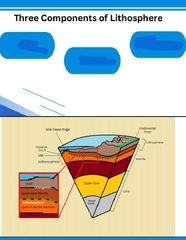
What are the three components of lithosphere |
Soil, rocks, sediment |
|
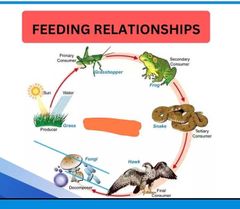
What kind of feeding relationships is on the figure? |
Food chain |
|
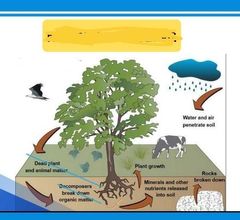
What cycle is on the figure? |
Nutrient cycle |
|
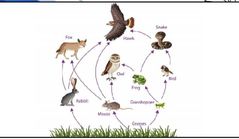
This figure shows the feeding relationships of? |
Food web |
|
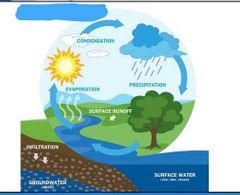
What cycle is on the figure? |
Water cycle |
|

What process of water is on the figure? |
Infiltration |
|
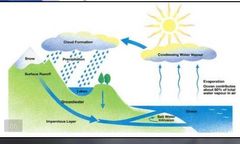
What process of water is on the figure? |
Transpiration |
|
|
The runoff produced by melting snow |
Snowmelt |
|
|
Condensed water vapor that falls to the Earth's surface. Most precipitation occurs as rain, but also includes snow, hail, fog drip, graupel, and sleet. |
Precipitation |
|
|
The flow of water from the ground surface into the ground. Once infiltrated, the water becomes soil moisture or groundwater. |
Infiltration |
|
|
The variety of ways by which water moves across the land. |
Runoff |
|
|
The flow of water underground, in the vadose zone and aquifers. |
Subsurface Flow |
|
|
The transformation of water from liquid to gas phases as it moves from the ground or bodies of water into the overlying atmosphere. |
Evaporation |
|
|
The state change directly from solid water (snow or ice) to water vapor |
Sublimation |
|
|
the transport of a substance or quantity by bulk motion of a fluid. |
Advection |
|
|
The transformation of water vapor to liquid water droplets in the air, creating clouds and fog. |
Condensation |
|
|
The release of water vapor from plants and soil into the air. Water vapor is a gas that cannot be seen. |
Transpiration |
|
|
What are the 10 processes of the water cycle? |
Precipitation, snowmelt, condensation, evaporation, sublimation, advection, transpiration, run off, sub surface flow, infiltration |
|
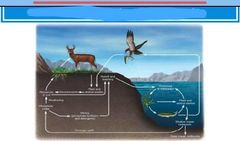
What cycle is on the figure? |
Sedimentary - phosphorus cycle |
|
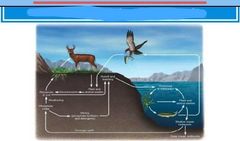
What cycle is on the figure? |
Sedimentary - phosphorus cycle |
|
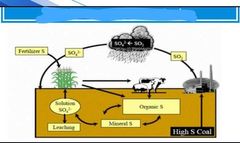
The figure shows what cycle? |
Sedimentary - sulfur cycle |
|
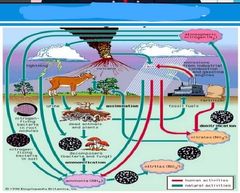
The figure shows what cycle? |
Gaseous - Nitrogen cycle |
|

The figure shows what cycle? |
Gaseous - Nitrogen cycle |
|
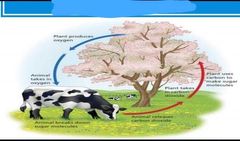
The figure shows what cycle? |
Gaseous - oxygen cycle |
|
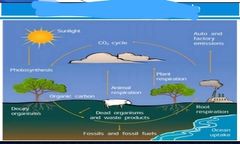
The cycle shows? |
Gaseous- Carbon dioxide cycle |
|
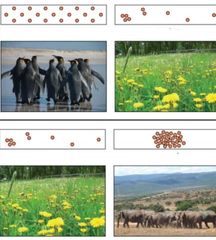
Define the population |
Uniform, Radom, Clumped |
|
|
What type of ecosystem that form when salt water from the ocean mixes with fresh water from the land. |
Estuary Ecosystem |
|
|
It is the branch of ecology that works to understand the patterns and processes of change over time or space for populations of a single species. |
Population ecology |
|
|
It is the scientific study of the relationship between organisms and their environment. |
ECOLOGY |
|
|
This deals with the relationships between an organism or population and environment. |
Autecology |
|
|
It focuses on the relationships between communities and their environment. |
SYNECOLOGY |
|
|
The basic unit of study in ecology is the _____. |
Ecosystem |
|
|
It is an any living thing, whether it is a human being, germ, a rose bush, or a panda bear. |
ORGANISM |
|
|
This defines the group of organisms of the same kind. |
Population |
|
|
the next largest level of organization. |
Community |

